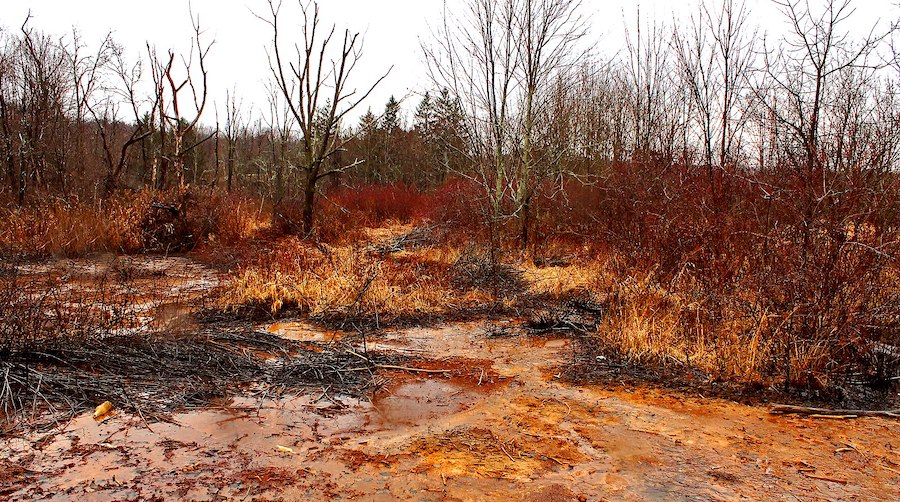Scientists find efficient way to extract REE from acid mine drainage
 Acid mine drainage from coal mines in Ohio. (Reference image by Jack Pearce, Wikimedia Commons).
Acid mine drainage from coal mines in Ohio. (Reference image by Jack Pearce, Wikimedia Commons).
Researchers at Penn State University developed a two-stage treatment process for acid mine drainage that enabled them to recover higher concentrations of rare earth elements using smaller amounts of chemicals than previously possible.
In a paper published in the Chemical Engineering Journal, the scientists say that AMD from coal mining operations in Appalachia represents a promising domestic source of REE because it often contains high concentrations of the minerals and because it is already being collected and treated due to environmental concerns.
By lowering recovery costs, the new treatment method could make the US rare-earth-element market more competitive
This residue is produced when pyrite rock - iron sulphide - unearthed by mining activity interacts with water and air and then oxidizes, creating sulfuric acid. The acid then breaks down surrounding rocks, causing toxic metals to dissolve into the water.
Traditional treatment methods involve collecting the AMD in ponds and adding chemicals to neutralize the pH. This causes the dissolved metals to precipitate and settle out of the water. Up to 70% of rare earth elements can be extracted as a sludge using this process, and the rest are released along with the treated water.
What the lead author of the study Behzad Vaziri Hassas and his colleagues found is that they could extract a higher concentration of rare earths and other critical minerals by adding carbon dioxide to the AMD and then bringing it to a neutral pH of 7, the target for environmental remediation.
The way it works is one in which the CO2 produces chemical reactions that result in the formation of solid minerals called carbonates. The rare earth elements bond with the extra carbonates and precipitate out of the water at lower pH values.
In their article, the researchers report that using this method, 90% of the aluminum was recovered at a pH of 5 and 85% of rare earth elements were recovered by pH 7.
According to them, recovering the same concentration of rare earth elements from AMD using traditional treatment methods would require adding additional chemicals to increase the pH beyond 7. Thus, they believe that by lowering recovery costs, the new treatment method could make the domestic rare-earth-element market more competitive.
"With a simple modification of existing treatment processes, industry could use less chemicals and get more value out of AMD waste," Mohammad Rezaee, one of the authors of the study, said in a media statement.